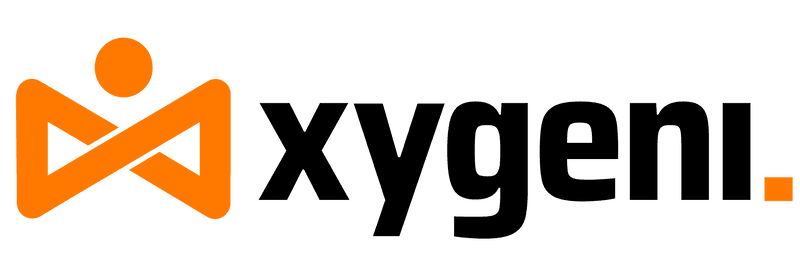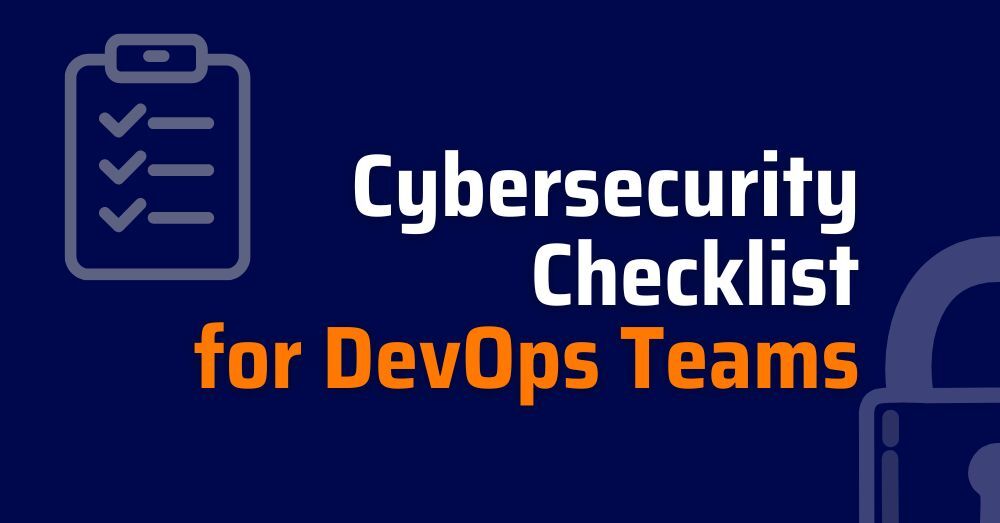To build secure and production-ready software, DevOps teams need more than isolated scanners. They need a real cybersecurity checklist that works in production. Whether you’re building a software security checklist, an application security best practices checklist, or preparing for a cybersecurity audit checklist, this guide gives you everything you need to secure your SDLC, end to end.
Most security failures don’t come from zero-day exploits. They come from gaps in process, misconfigurations, or missing controls. That’s why teams need more than scanners, they need a working checklist that turns best practices into daily habits.
An effective checklist does more than check a compliance box. It guides your team through each phase of the SDLC, helping you prevent incidents before they happen. Whether you’re building shift-left controls or reducing alert fatigue, a strong checklist is your foundation for real security.
In this post, we’ll walk through a software security checklist designed for modern DevOps teams. It covers planning, coding, CI/CD, deployment, runtime, remediation, and supply chain hygiene. You’ll also learn how to put this into action with Xygeni’s platform, so your security doesn’t just look good on paper, it works in production.
2. How to Build a Software Security Checklist That Works Across the SDLC
An effective software security checklist isn’t a static PDF you open once a year. Instead, it’s a living set of controls that evolves with your pipeline, your architecture, and your threat model. To make it effective, you must align it with how your teams actually build and ship software.
That’s why the most practical application security best practices checklist follows the structure of the SDLC. It maps protections to each phase: planning, coding, building, deploying, running, and remediating. As a result, no stage becomes a blind spot, and the checklist provides traceability for audits and compliance checks.
If you’re preparing a cybersecurity audit checklist, this structure also simplifies evidence collection. Whether you need to show signed commits, secure CI/CD workflows, or SBOMs per release, aligning controls to SDLC phases helps you prove due diligence and continuous enforcement.
Additionally, using a consistent structure supports modern frameworks like ASPM (Application Security Posture Management). It makes it easier to track ownership, remediation progress, and security gaps across your code, pipelines, and infrastructure.
Ultimately, this approach transforms your cybersecurity checklist from a theoretical guideline into a reliable execution framework, one that helps you scale security without slowing development.
3. Full Cybersecurity Checklist for DevOps Teams: From Code to Runtime
This cybersecurity checklist, in fact, aligns with modern DevOps workflows and ASPM principles. Rather than offering abstract recommendations, it focuses on real, actionable protections that teams can implement immediately. As a result, you can apply these steps across your SDLC to harden security, reduce vulnerabilities, and streamline compliance audits.
Each phase below, moreover, reflects best practices used by high-performing teams and aligns with modern software security checklist frameworks.
Planning & Design (Cybersecurity Checklist Phase 1)
- Define security guardrails and policies at the repo, org, and project level
- Scan Infrastructure-as-Code templates (Terraform, Kubernetes, Helm, etc.) for misconfigurations before deployment
- Enforce secure defaults and least-privilege permissions in CI/CD workflows
Coding & Development
- Run deep static analysis (SAST) on first-party code to detect:
- SQL injection, XSS, command injection
- Buffer overflows, authentication issues, config leaks
- Malicious code such as backdoors, spyware, or ransomware
- Apply AI-powered AutoFix to generate context-aware pull requests with secure fixes
- Prioritize only exploitable issues using smart filters like Reachability + EPSS
- Block secrets (API keys, tokens) before they’re committed—even inside
.env, git history, or containers - Ensure all commits are signed and tamper-proof
CI/CD & Build Security
- Scan GitHub Actions, Jenkins, and Bitbucket pipelines for:
- Unsafe workflow logic
- Overprivileged tokens or job scopes
- Unpinned dependencies or risky steps
- Enforce CI-integrated Guardrails to block builds with vulnerable or malicious packages
- Generate SLSA-compliant provenance for every artifact using in-toto attestations
- Detect malware and backdoors during the build phase, not after deployment
- Automatically generate SBOMs and VDRs (CycloneDX, SPDX) per build
Release & Deployment
- Break releases automatically if policies detect:
- Unrevoked secrets
- Unverified artifacts
- High-risk packages
- Block IaC changes or cloud resources that violate security rules
- Detect and prevent packages with suspicious install scripts, typosquatting, or dependency confusion
Runtime Monitoring & Detection
- Monitor source control and CI for anomalies:
- Unexpected merges, new secrets, CODEOWNERS changes
- Forced pushes, admin role escalations, repo deletions
- Detect infrastructure drift or unauthorized file changes in cloud environments
- Track build and runtime behavior to catch:
- Obfuscated code or reverse shells
- Registry tampering, suspicious downloads, or unexpected outbound traffic
Remediation & Response
- Use Bulk AutoFix to patch multiple vulnerable dependencies in one action
- Generate pull requests with secure versions and changelogs automatically
- Trigger alerts and actions via webhook, email, or native DevOps channels (Slack, GitHub, etc.)
- Centralize issues across code, dependencies, CI/CD, and cloud in one ASPM dashboard
- Filter alerts by exploitability (EPSS), reachability, vulnerability type, and team ownership
Supply Chain Hygiene
- Continuously scan public registries (npm, PyPI, Maven, NuGet) for malicious packages
- Quarantine and review new open source components before they reach staging or prod
- Validate SBOMs for every release to meet EO 14028, NIST, FDA, and ISO/IEC requirements
- Block packages with high publisher risk (e.g., anonymous maintainers, expired domains)
This checklist doesn’t just prepare you for a cybersecurity audit checklist, it helps you bake security into every delivery pipeline.
4. Cybersecurity Audit Checklist: How to Prove Compliance Automatically
A well-structured application security best practices checklist doesn’t just protect your codebase, it also makes security audits faster, smoother, and less painful. When security is mapped to each SDLC phase, your team can easily generate the evidence required by regulatory frameworks.
For example, a cybersecurity audit checklist might ask for:
- Proof of signed commits
- Verified SBOMs for every release
- Secure CI/CD workflows with access controls
- Logs of vulnerability scans and remediation timelines
By aligning these controls with real-world developer workflows, you reduce the friction between Dev and GRC. Instead of scrambling during audits, you simply show the controls already embedded in your pipelines.
This approach aligns with popular standards and regulations such as:
- ISO 27001: Controls for secure development, change management, and supplier risk
- NIST SSDF: Guidelines for secure design and vulnerability management
- EO 14028: Requirements for artifact integrity, SBOMs, and incident response
And when you use platforms like Xygeni, generating this evidence becomes a natural part of your SDLC, not a last-minute scramble. You get centralized visibility, enforcement logs, and policy-based reports that make audits easier to pass and easier to repeat.
5. From Software Security Checklist to Enforcement: How Xygeni Automates It
Having an application security best practices checklist is a great start, but enforcing it across fast-moving DevOps pipelines is where most teams struggle. That’s exactly where Xygeni makes the difference.
Instead of relying on documents or manual checks, Xygeni brings every control from your checklist into your delivery flow. Misconfigurations, secrets, malware, or policy violations? All of them are detected and blocked automatically, before they impact production.
The table below shows how each item from a modern software security checklist maps to real protections inside Xygeni. This turns your checklist into an active enforcement layer: traceable, auditable, and always on.
Here’s how Xygeni turns your software security checklist into continuous security automation:
| Security Requirement | How Xygeni Automates It |
|---|---|
| Scan IaC for misconfigurations | IaC scanning (Terraform, K8s, Helm) integrated in CI |
| Block secrets at commit time | Secrets Detection engine with PR and history scanning |
| Detect and remove malware during build | Build-phase malware detection with AutoFix |
| Break builds on policy violations | Guardrails integrated with GitHub, GitLab, Jenkins |
| Generate SBOMs per release | Auto-SBOM generation (CycloneDX, SPDX) with signing |
| Patch multiple vulns automatically | Bulk AutoFix with reachability + changelogs |
6. From Checklist to Real Security: Make It Work Across Teams
An effective application security best practices checklist only works when it aligns with how your teams already build, test, and ship code. After all, security should never feel like a separate step or an afterthought.
To turn your software security checklist into enforceable protections across DevOps:
- Shift left: Scan code, IaC, and workflows before they merge—not in staging.
- Automate: Use guardrails and CI-integrated scanners to enforce policies automatically.
- Prioritize: Focus on reachable, exploitable, and high-impact vulnerabilities.
- Collaborate: Make issues visible where teams already work—GitHub, GitLab, Slack, or Jenkins.
- Track: Use an ASPM dashboard to monitor risks across code, CI/CD, and supply chain.
As a result, your cybersecurity checklist becomes more than documentation, it becomes a shared, actionable framework for Dev, Sec, and Ops to align around real security outcomes.
Additionally, a well-maintained checklist serves as your cybersecurity audit checklist during compliance reviews. Whether you’re preparing for ISO 27001, EO 14028, or NIST, you’ll have traceable evidence: signed commits, policy-enforced pipelines, SBOMs per release, and full remediation logs.
In fact, Xygeni takes you beyond theory. It transforms your checklist into continuous protection, with secrets detection, malware blocking, CI/CD guardrails, and AutoFix PRs built into your flow.

